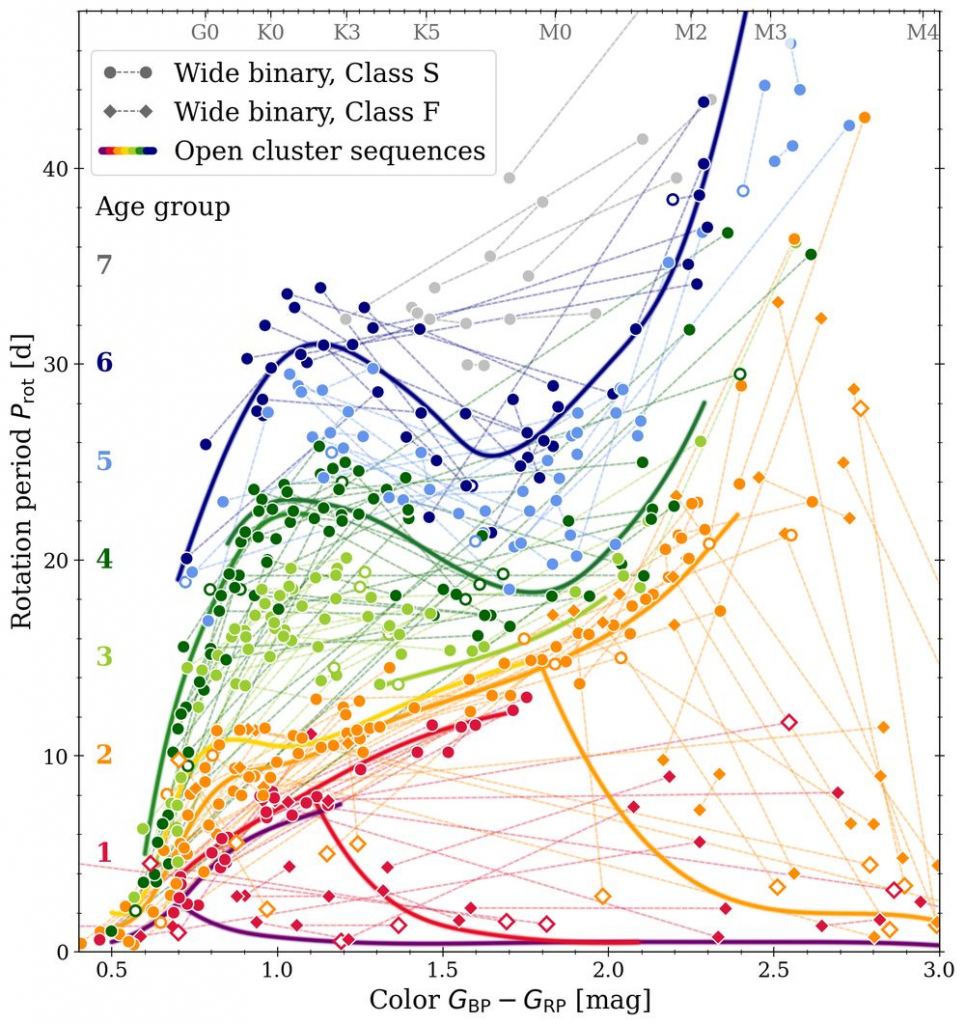Twinkle, twinkle little star, I wonder just how old you are.
It isn't an easy question to answer. Stars are notoriously difficult to age. We know the age of the Sun because we happen to live on one of its orbiting rocks, and we know very well how old the rock is. Without that information, things become a bit more fuzzy. But that could change thanks to a new study.
We do know a few broad rules about determining the age of a star. For example, generally the higher the metallicity of a star the younger it is. And main sequence stars like the Sun tend to get hotter as they age, so if two stars have the same mass and composition, the hotter of the two is likely the older. But by themselves, these general rules aren't enough to get a precise age determination. For that, we typically look at clusters of stars.
Star clusters such as open clusters and globular clusters generally form within a single molecular cloud, and they do so around the same time. When you look at the stars in a cluster you know they are all around the same age. Astronomers can use this fact to get a good age for star clusters. Individually there will be variations in things like metallicity and temperature, but statistically, the average age determination is a good measure of the cluster's age.
But one thing that has been noticed is that among star clusters, older clusters have stars that rotate more slowly than stars in young clusters. This suggests that a star's rotation rate slows down as it ages. This would be a great way to determine stellar age because many stars have starspots, which we can use to measure rotation pretty easily. There are just two problems. The first is that within a cluster stars can be gravitationally bound, and this interaction might be driving the slowdown. If so, then individual stars wouldn't experience the same rotational decay. The second is that the metallicity of a star affects its density and temperature, so metallicity could have a significant effect on the slowdown rate.
Still, the technique would be so useful that a team wanted to explore it further. They looked at 300 wide binary stars. These are binary stars with orbital distances large enough that their rotations are independent of each other. And since binary systems form all at once, the team could be confident that binary pairs were the same age.
The team then applied the cluster method of using temperature and rotation rate to determine the age of each star in a pair. They found that the ages of binary pairs matched using this method. And with 300 samples to work with, they are confident the method works. The team also found the approach worked regardless of the metallicity of the stars. So while metallicity might have a small effect on stellar age, the rotation approach works all the same.
From this work, astronomers can feel confident in using rotation as an age measure regardless of whether a star is single, binary, or part of a cluster. This is great news. Telescope satellites such as Gaia and the upcoming PLATO mission have the search for exoplanets as part of their mission. The same method used to find the dip in stellar brightness as an exoplanet transits can also be used to measure the rotational rate of a star through starspots. In time could know the age of billions of stars as well as their motion and whether they have planets.
Reference: Gruner, D., S. A. Barnes, and K. A. Janes. " Wide binaries demonstrate the consistency of rotational evolution between open cluster and field stars." *Astronomy & Astrophysics* 675 (2023): A180.
 Universe Today
Universe Today

